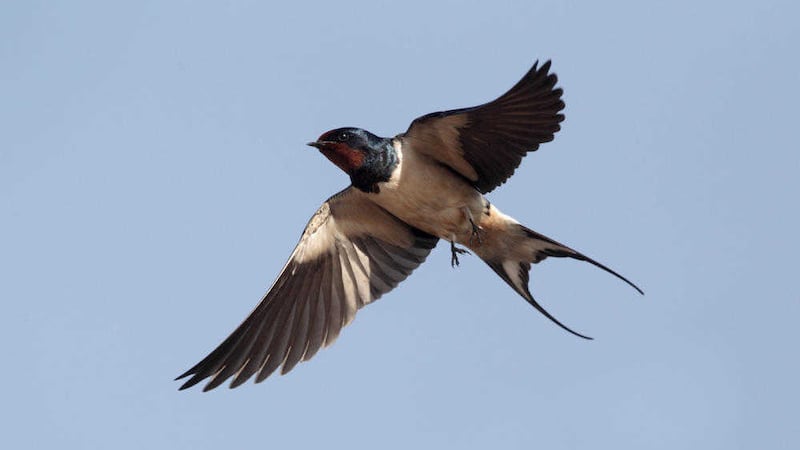‘I meditate upon a swallow’s flight’
Coole Park 1929
WB Yeats
LONG before the advent of proper scientific ornithology, bird migration was poorly understood, if at all. People knew that some birds appeared in the summer and then disappeared in the autumn, with others appearing in winter, only to vanish again in the spring.
Many notable scholars and naturalists believed that the swallow (Hirundo rustica), our summer visitor from southern Africa, hibernated at the bottom of ponds during the winter. In 350 BC, Greek philosopher Aristotle wrote about this in his pioneering work of zoology, Historia Animalium (History of Animals). He stated that while some species migrate to distant places, others including the swallow, "simply hide themselves where they are".
Swedish Archbishop and writer Olaus Magnus wrote about the swallow in his work on folklore and history, History of the Northern Peoples (1555), saying, "In the beginning of Autumn, they assemble together among the reeds of ponds, where, allowing themselves to sink into the water, they join bill to bill, wing to wing, and foot to foot."
Reports even existed of fishermen catching hibernating swallows in their nets.
Gilbert White, the famous curate of Selborne parish in the south of England from 1751, was another who wrote of his uncertainty about whether the swallow and similar species migrated or hibernated.
In letters contained in his famous work, The Natural History of Selborne (1789), White writes, "though most of the swallow kind may migrate, some do stay behind and hide with us during the winter". No doubt White was still dealing with Aristotle’s lore and hearsay from 2,000 years earlier but, significantly, it was Gilbert White’s methodology of fieldwork and first-hand observations of local birds and animals which would ultimately dispel the myth of swallow hibernation.
Early beliefs remained, however, until the 19th century when the use of ringing and banding to track bird movements for scientific purposes was established.
Swallows (sometimes called barn swallows) arriving in our northern skies during March or April, are keenly awaited as harbingers of spring. Known in Irish as ‘fáinleog' which may come from ‘fán’ meaning to wander or stray, swallows are characterised by their aerial acrobatics and chattering as they, in the words of White again, "clear our outlets from the annoyances of gnats and other troublesome insects".
The adult bird is recognised by its glossy dark blue wings and back, long forked tail streamers, white undersides and a distinctive red throat patch. Their annual return to familiar sites where the characteristic bowl-shaped nest of mud in barns and other out buildings is repaired, maintains a long and generally peaceful association with man.
The birds carry with them generations of beliefs and traditions. Disturbing a swallow or its nest is sure to result in a farmer’s cow failing to give its due supply of milk. If a swallow nests in your barn it will not be struck by lightning. Fifth century medical writer, Marcellus Empiricus wrote of how swallows could cure all problems of the eyes. After seeing the first swallow and washing your eyes, he says "Swallows will carry all trouble from them".
Seeing a swallow at sea was also a good omen as their appearance informed sailors land was near. The swallow is sometimes known as ‘the bird of freedom’ from its Hebrew name ‘deror', signifying liberty and the universal belief it cannot endure captivity and will only mate in the wild.
A remarkable bird, now back with us for another spring and summer.



